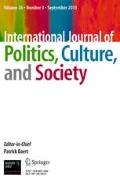Notes
The four original mendicant orders (Dominicans, Carmelites, Augustinians, and Franciscans) were recognized in the Second Council of Lyon in 1274.
The story of the conflictive Church/State relations in Mexico is old. The Real Patronato de Indias, a board appointed by the Spanish Crown, was created in 1493 to oversee decisions and petitions made by bishops to the Vatican in regards to the New Spain. The Catholic Church conceded privileges to the Kings of Spain and Portugal in exchange for their commitment to evangelize the recently “found” souls and to incorporate those territories to the Roman Catholic religion. The Independence War of 1810–1821 vindicated the Catholic Church and aimed—among many other issues—at lessening its submission to the State. This was also at issue during the nineteenth-century conflict between liberals and conservatives. Finally, after the Constitution of 1857, the Church lost most of its privileges but was granted a certain independence from the secular powers. The conflict took catastrophic proportions after the 1910 Revolution and gave way to the Cristero war (1926–1929), subsiding only after long and complex negotiations between the Vatican and Mexican government, which curtailed many Church privileges. A 1991 Constitutional reform opened the way to a more relaxed relation.
For example, the National Network “All human rights for all,” created in 1990, groups 55 civil organizations devoted to the defense of human rights. It is not explicitly Catholic, but more than half of its members are related to either Catholic Orders (Dominicans, Jesuits and Franciscans) or dioceses.
Legend has it that Juan Diego was a Nahua Indian to whom the Virgin Mary appeared in Tepeyac hill, near Mexico City. It was 1531, just 10 years after the Spanish Conquest. She commanded the astonished farmer to transmit her wishes that a church be built at the site. In order to convince the Bishop of the truth of Juan Diego’s words, Mary imprinted her image in his cloak. The “Guadalupe event” has been considered as the beginning of evangelization. Juan Diego was canonized in 2002.
Oscar Romero was Archbishop of San Salvador, El Salvador, between 1977 and 1980. He repeatedly denounced the repressive actions carried out by the Salvadoran government in the context of the civil war in that country and set in place a human rights office to advocate for the victims. He was assassinated in 1980 by death squads linked to would-be President Roberto D’Aubuisson.
The authors discuss the existence of cooperatives inspired by Romero’s ideals (Jicaro and San Sebastian); Equipo Maiz, a training center for Base Communities in San Juan and the gang “Los Romeros,” a group of former violent gang members who have gathered to fight drugs, alcohol, and poverty in San Salvador.
A history of the Church in Latin America, Eerdmans 1981; Philosophy of Liberation, Orbis 1985
Teologia India: antologia, Verbo Divino, 2000
Hacia una evangelizacion inculturada, Lascasiana, 1995; Ministerios Indigenas: Intercambio de Experiencias Mexico, Guatemala y Ecuador, CENAMI, 1993
Los fundamentos de los derechos humanos en Bartolomé de las Casas, Anthropos 1994
References
Brading, D. A. (2001). Mexican phoenix: Our Lady of Guadalupe: Image and tradition across five centuries. Cambridge: Cambridge University Press.
Castelli, E. (2004). Martyrdom and memory. Early Christian culture making. New York: Columbia University Press.
Czarnowski, S. (1975). Le Culte des Héros et ses Conditions Sociales. New York: Arno.
Elizondo, V. (1997). Guadalupe: Mother of the new creation. New York: Orbis.
Gruzinski, S. (2001). Images at war: Mexico from Columbus to blade runner. Durham: Duke University Press.
Gutierrez, G. (1987). On Job: God-talk and the suffering of the innocent. New York: Orbis.
Halbwachs, M. (1962). Sources of religious sentiment. New York: Free Press.
Halbwachs, M. (1992). On collective memory. Chicago: University of Chicago Press.
Hoornaert, E. (1988). The memory of the Christian people. New York: Orbis.
Palacios, J. M. (2007). The Catholic social imagination. Activism and the just society in Mexico and the United States. Chicago: The University of Chicago Press.
Rodriguez, J., & Fortier, T. (2007). Cultural memory. Resistance, faith, and identity. Austin: The University of Texas Press.
Author information
Authors and Affiliations
Corresponding author
Rights and permissions
About this article
Cite this article
Lopez-Menendez, M. Memory, Faith, and Social Action. Int J Polit Cult Soc 21, 87–91 (2008). https://doi.org/10.1007/s10767-008-9036-6
Published:
Issue Date:
DOI: https://doi.org/10.1007/s10767-008-9036-6

